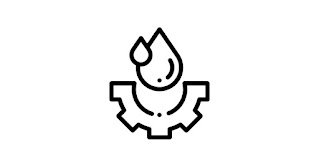1. Coefficient of discharge for a totally submerged orifice as compared to that for an orifice discharging free is
a) slightly less
b) slightly more
c) nearly half
d) equal
Ans: a
2. The major loss of energy in long pipes is due to
a) sudden enlargement
b) sudden contraction
c) gradual contraction or enlargement
d) friction
Ans: d
3. Coefficient of contraction for an external cylindrical mouthpiece is
a) 1.00
b) 0.855
c) 0.7H
d) 0.611
Ans: a
4. Which of the following has highest coefficient of discharge ?
a) sharp edged orifice
b) venturimeter
c) Borda’s mouthpiece running full
d) CipoUetti weir
Ans: b
5. In a Sutro weir, the discharge is proportional to
a) H1/2
b) H3/2
c) H5/2
d) H
where H is head.
Ans: d
6. The discharge over a broad crested weir is maximum when the depth of flow is
a) H/3
b) H/2
c) 2 H/5
d) 2 H/3
where H is the available head.
Ans: d
7. Which of the following statements is correct?
a) Lower critical Reynolds number is of no practical significance in pipe flow problems.
b) Upper critical Reynolds number is significant in pipe flow problems.
c) Lower critical Reynolds number has the value 2000 in pipe flow
d) Upper critical Reynolds number is the number at which turbulent flow changes to laminar flow.
Ans: a
8. For a sphere of radius 15 cm moving with a uniform velocity of 2 m/sec through a liquid of specific gravity 0.9 and dynamic viscosity 0.8 poise, the Reynolds number will be
a) 300
b) 337.5
c) 600
d) 675
Ans: d
9. The shear stress distribution for a fluid flowing in between the parallel plates, both at rest, is
a) constant over the cross section
b) parabolic distribution across the section
c) zero at the mid plane and varies linearly with distance from mid plane
d) zero at plates and increases linearly to midpoint
Ans: c
10. If x is the distance from leading edge, then the boundary layer thickness in laminar flow varies as
a) x
b) x
c) x
d) x/7
Ans: a

